Back to: Dermatology
Systemic Skin Conditions
There are many skin conditions which are associated with an underlying systemic pathology.
Diabetic Skin Conditions
Diabetic dermopathy
This is the presence of atrophic brown patches on shins, “shin spots”
– It occurs due to changes in the microvasculature and leakage of blood into the skin – Occurs in about a third of diabetic patients
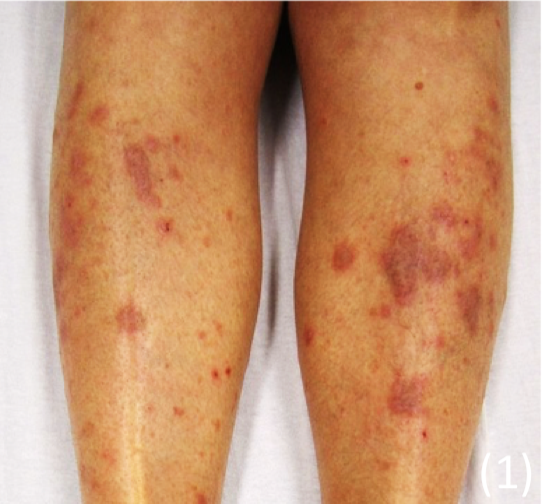
Necrobiosis Lipiodica
These are yellow/brown waxy plaques that are slow growing and can ulcerate
– They are also seen in rheumatoid arthritis
– Lesions occur usually on the patient’s shins due to collagen degeneration
– Appears as hardened, raised area of skin with yellowish tint
Treatment
– PUVA (psoralen and ultraviolet A)
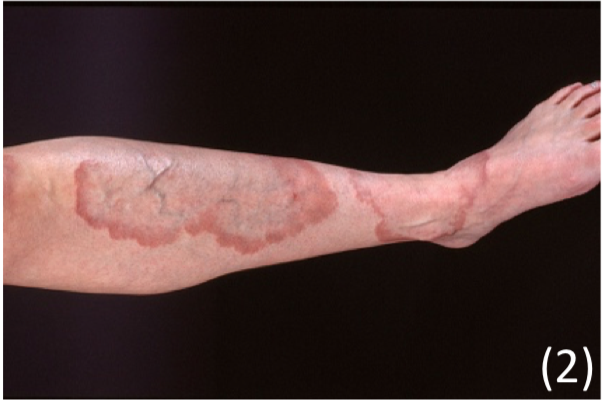
Granuloma annulare
A rare chronic skin condition that presents as reddish bumps on skin in a circle
– Occur due to clustering of T cells below the skin surrounding macrophages
– Often seen on backs of forearms, hand and feet over the joints and knuckles
– Usually asymptomatic but can burn or itch a little
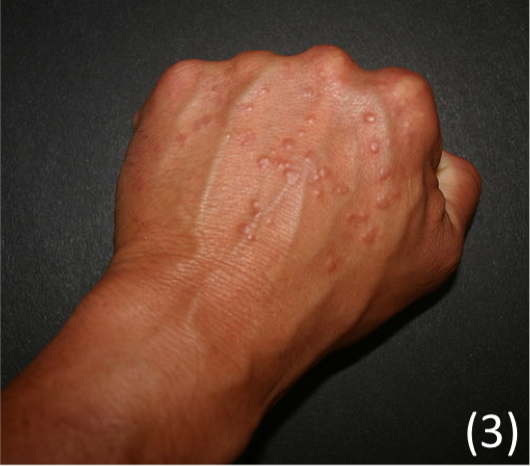
Acanthosis Nigricans
This refers to hyperplasia with darkening of the skin in the axilla, groin and neck
– It is a non-specific skin sign which is associated with a host of systemic conditions:
– Diabetes Mellitus
– Obesity
– Oral contraceptive pill
– Hypothyroidism
– GI cancer
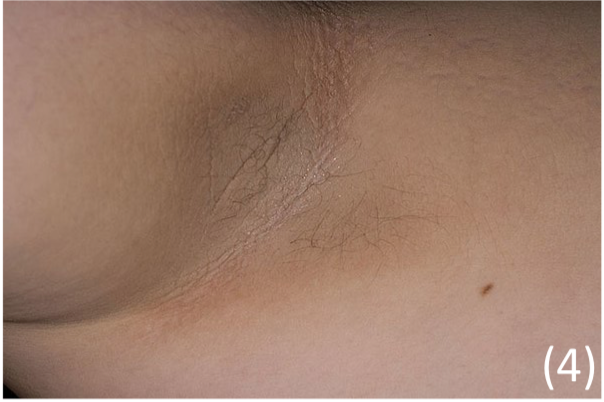
Diabetic ulcers
This is a painless neuropathic ulcer which occurs due to peripheral neuropathy.
– Patients lose sensation which causes overpressure on pressure points on the feet leading to microtrauma and tissue breakdown
– Poor wound healing means the tissue is not repaired causing ulcer formation
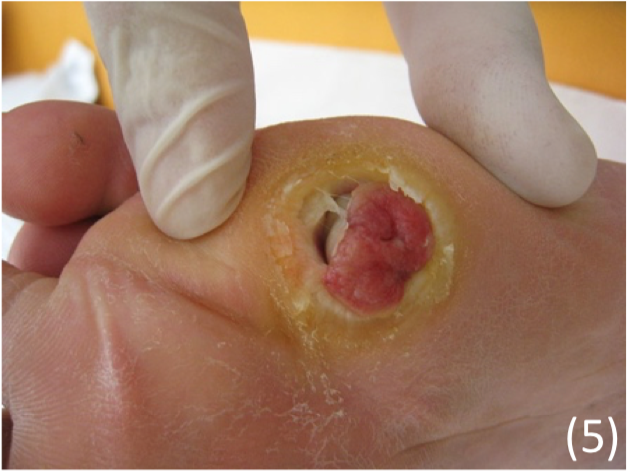
Appearance
– Seen on the soles of the feet as penetrating ulcer on toes
– Seen with trophic changes (shiny skin, hair loss) + reduced sensation
Management
– Refer to diabetic foot centre + specialised cushioned footwear
Chronic Inflammatory Skin Conditions
Dermatitis Herpetiformis
This is an autoimmune skin condition associated with coeliac disease, which occurs when IgA antibodies become deposited in the skin.
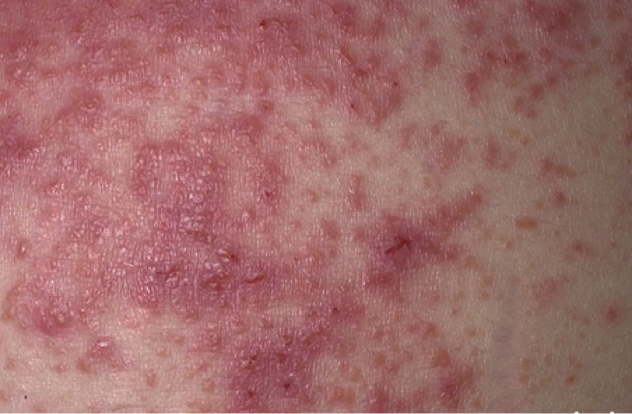
Appearance
– Symmetrical itchy vesicular lesions on the skin which appear in groups
– The blisters often become eroded and crusted due to the itching
– Classically seen on extensor surfaces like the elbows, knees and buttocks
Diagnosis
– Immunofluorescence of skin biopsy shows deposition of IgA in dermis
Management
– Gluten-free diet
– Dapsone –> antibiotic which inhibits synthesis of dihydrofolic acid, reduces itch in 3 days
Pyoderma gangrenosum
This is a painful ulcer that occurs on the lower limbs suddenly at site of minor injury
– Not caused by a pathogen, but instead by improper functioning of neutrophils
– Usually idiopathic but associated with chronic inflammatory disorders
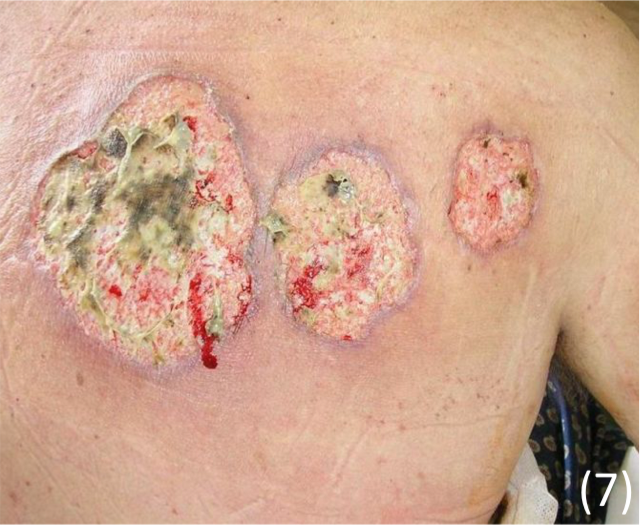
Appearance
– Starts as a small red pustule/bump but then the skin breaks down quickly
– This eventually leaves a deep ulcer with a purplish border
– If left untreated, the ulcer may keep growing larger, persist or slowly heal
Associations:
– Inflammatory bowel disease
– Rheumatoid arthritis, SLE
– Lymphoma, myeloid leukaemia – Primary biliary cirrhosis
Management:
– 1st line is oral steroids
– Large ulcers need oral steroids, ciclosporin or biological agents
Erythema Nodosum
An inflammatory disorder which affects the subcutaneous fat cells under the skin
– This leads to the development of painful red nodules usually on the shins
– It is more common in women than men usually seen in ages from 20-40.
– The lesions do not form ulcers and heal without scarring
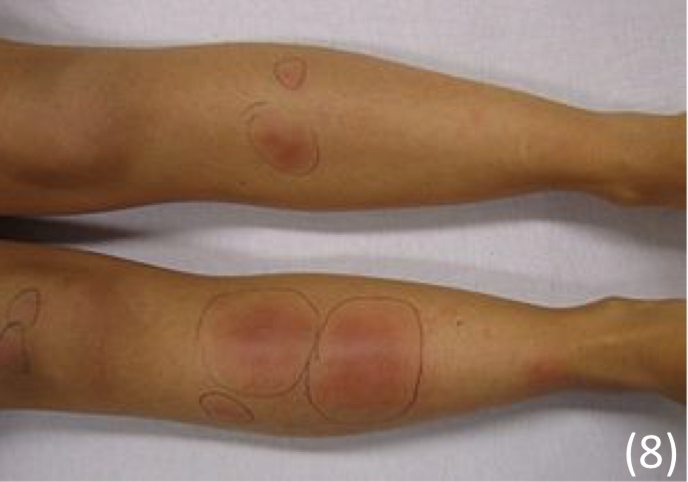
Appearance
– Erythematous tender plaques mainly on shins + thighs
– Initially red, but then go purple, brown or like a bruise before resolving themselves
Associations:
– Chest infection –> TB, streptococci
– Sarcoidosis
– Inflammatory bowel disease
– Drugs –> Amoxicillin, contraceptive pill
– Lymphoma
– Pregnancy
SLE Skin Conditions
This is a type 3 hypersensitivity reaction where immune system dysregulation leads to immune complex formation and deposition within many organs. A common place of deposition to occur is the skin giving classic signs:
Alopecia
This is an autoimmune condition causing distinct patches of hair loss
Discoid lupus
Inflammatory condition consisting of scarring, annular scaly plaques on exposed parts of face/scalp
Photosensitive rash
This is a red rash, occurring across the cheeks and bridge of nose
– Can be a very mild red blush, blotchy or can be flat or raised
– Classically there is nasolabial sparing which gives the classic butterfly distribution
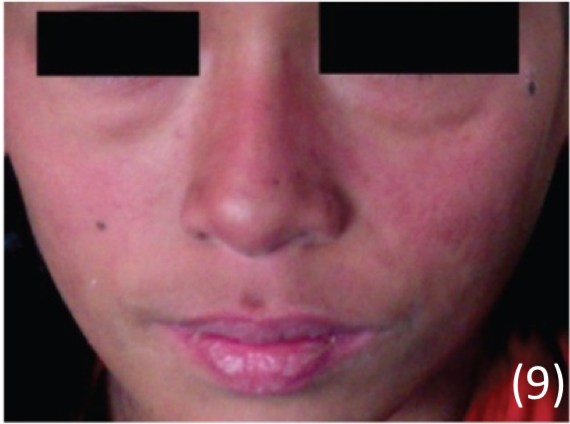
Livedo Reticularis
A skin condition due to swelling of venules caused by capillary obstruction by small clots
– Looks like a lacey purplish discolouration of the skin following a vascular pattern
– Due to conditions which increase the risk of forming clots in small vessels, e.g. SLE, polyarteritis nodosa
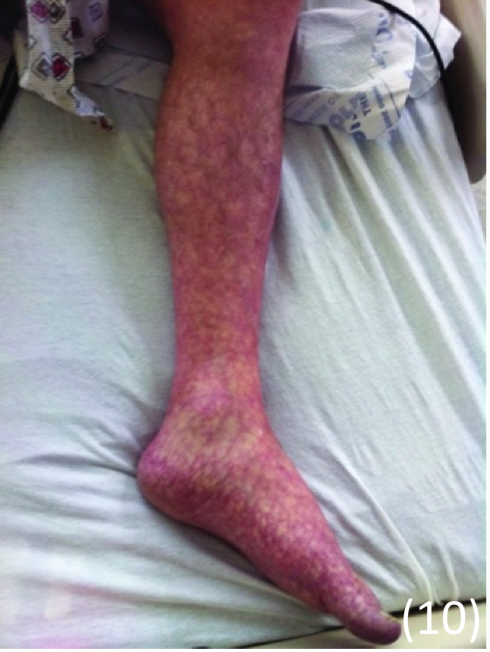
Sources
Image 1: James Heilman, MD / CC BY-SA (https://creativecommons.org/licenses/by-sa/3.0)
Image 2: Kreuter et al Uploaded by My Core Competency is Competency / CC BY-SA (https://creativecommons.org/licenses/by-sa/2.0)
Image 3: Mierlo at English Wikipedia / Public domain
Image 4: Madhero88 / CC BY-SA (https://creativecommons.org/licenses/by-sa/3.0)
Image 5: Intermedichbo at Serbian Wikipedia / CC BY-SA 3.0 RS (https://creativecommons.org/licenses/by-sa/3.0/rs/deed.en)
Image 6: Madhero88 / CC BY-SA (https://creativecommons.org/licenses/by-sa/3.0)
Image 7: I, Monopol / CC BY-SA (http://creativecommons.org/licenses/by-sa/3.0/)
Image 8: James Heilman, MD / CC BY-SA (https://creativecommons.org/licenses/by-sa/3.0)
Image 9: CNX OpenStax / CC BY (https://creativecommons.org/licenses/by/4.0)
Image 10: Nantsupawat T et al / CC BY (https://creativecommons.org/licenses/by-sa/3.0/deed.en)


